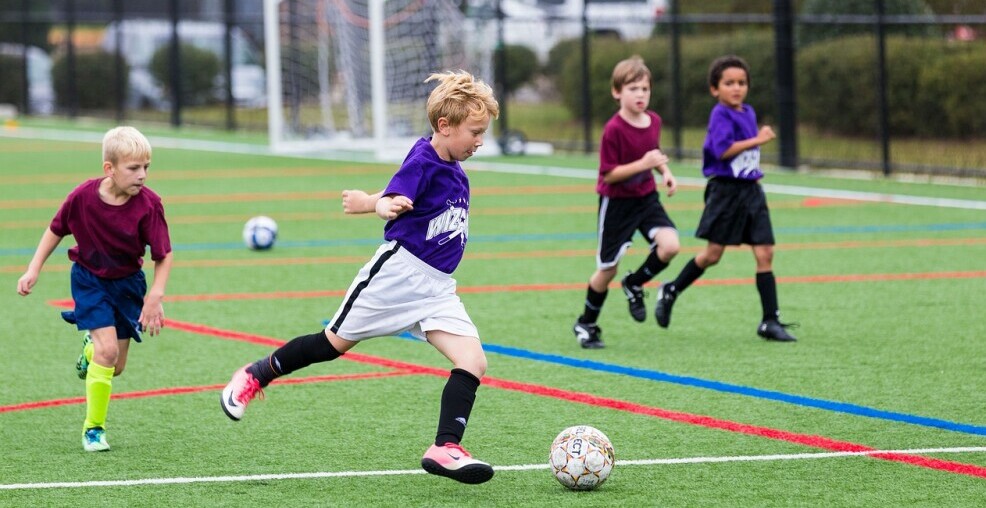
Understanding why movement is so crucial in soccer starts with recognizing that it’s not just about having the ball. It’s about where you are on the field. Good movement can help create space, open up passing lanes, and keep the defense on their toes. It’s a game-changer.
One of the fundamental parts of movement on the soccer field is dribbling. Dribbling isn’t just moving the ball forward. It’s about control, direction changes, and maintaining possession under pressure. Practicing dribbles, like tight turns and rapid stops, can make a big difference in staying ahead of your defender.
Passing is another key aspect. It’s not just about getting the ball to a teammate but doing so in a way that keeps the play fluid. Practice different types of passes: short, long, ground, and aerial. Learn to pass with precision and at the right time. Effective passing can easily dismantle a tight defense.
Positioning yourself on the field while you’re off the ball is equally important. Moving into spaces where you can receive the ball or pull defenders out of position helps your team maintain control of the game. This kind of movement often goes unnoticed but is vital for maintaining your team’s shape and creating scoring opportunities.
To really hone these basic movements, incorporate specific drills into your training routines. Dribbling through cones, playing keep-away games, and practicing one-touch passes can improve skills. Regular practice of these movements can turn good players into great ones.
Advanced Positioning Strategies
Spatial awareness in soccer is essential. Knowing where you and your teammates are on the field helps you exploit weaknesses in the opposing team. This skill is what separates elite players from the rest. Developing a keen sense of positioning can significantly contribute to your team’s success.
Different positions on the field require unique approaches to positioning. As a defender, your priority is to cover ground, intercept passes, and mark opponents. Midfielders need to be the link between defense and attack, often moving into spaces where they can receive and distribute the ball effectively. Attackers focus on finding gaps in the defense and creating opportunities to score.
Creating space is vital at all levels of play. One effective method is to make runs off the ball. By moving into different areas, you can pull defenders out of their designated zones, opening up space for your teammates. Another technique is using quick passes to shift the defense and create openings, requiring good communication and pre-emptive understanding with teammates.
To exploit space, you need to be tactically smart. For defenders, positioning yourself to cover potential passing lanes can prevent counterattacks. Midfielders should always be looking for pockets of space to receive the ball and transition it effectively. Attackers must anticipate defensive lapses and time their runs to stay onside and get clear shots on goal.
Incorporating positioning drills into practice is key to mastering these strategies. Defensive players can work on shadowing attackers, while midfielders can practice receiving and passing under pressure. Attackers should focus on timing their runs and finishing from different angles. With consistent practice, these exercises will enhance your in-game positioning and overall performance.
Applying Movement and Positioning in Game Situations
Bringing all these learned skills to real-game situations is where it all pays off. Game scenarios are dynamic, requiring adaptation on the fly. Experience and practice will help you react faster and make better decisions during crucial moments.
Watch for patterns during the game. Every match has moments that repeat, like opposing players’ movements or common passing lanes. By identifying these patterns early, you can position yourself more effectively. This makes it easier to intercept passes, block shots, or get into scoring positions.
Adapting to an opponent’s tactics is crucial. Are they pressing high? Dropping deep? Recognizing their strategy lets you modify your positioning and movement to counter it. For example, if the opponents press high, positioning defenders and midfielders to receive quick outlet passes can relieve pressure. On the flip side, against a deep-block defense, attackers need to exploit the small gaps between players with quick movement and sharp passing.
Learning from successful teams and players offers invaluable insights. Study professional games to observe how elite players use movement and positioning. Notice how they create space, anticipate plays, and maneuver around defenders. Incorporating these tactics into your play style can give you an edge.
Hearing tips from professional players and coaches can also be a game-changer. Many pros emphasize the importance of maintaining composure and focusing on the basics: positioning, quick passes, and constant movement. Understanding and mimicking these principles can elevate your game. The practice sessions, drills, and games all contribute to building these skills, but real progress comes from applying them consistently in match situations.
